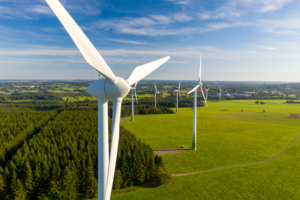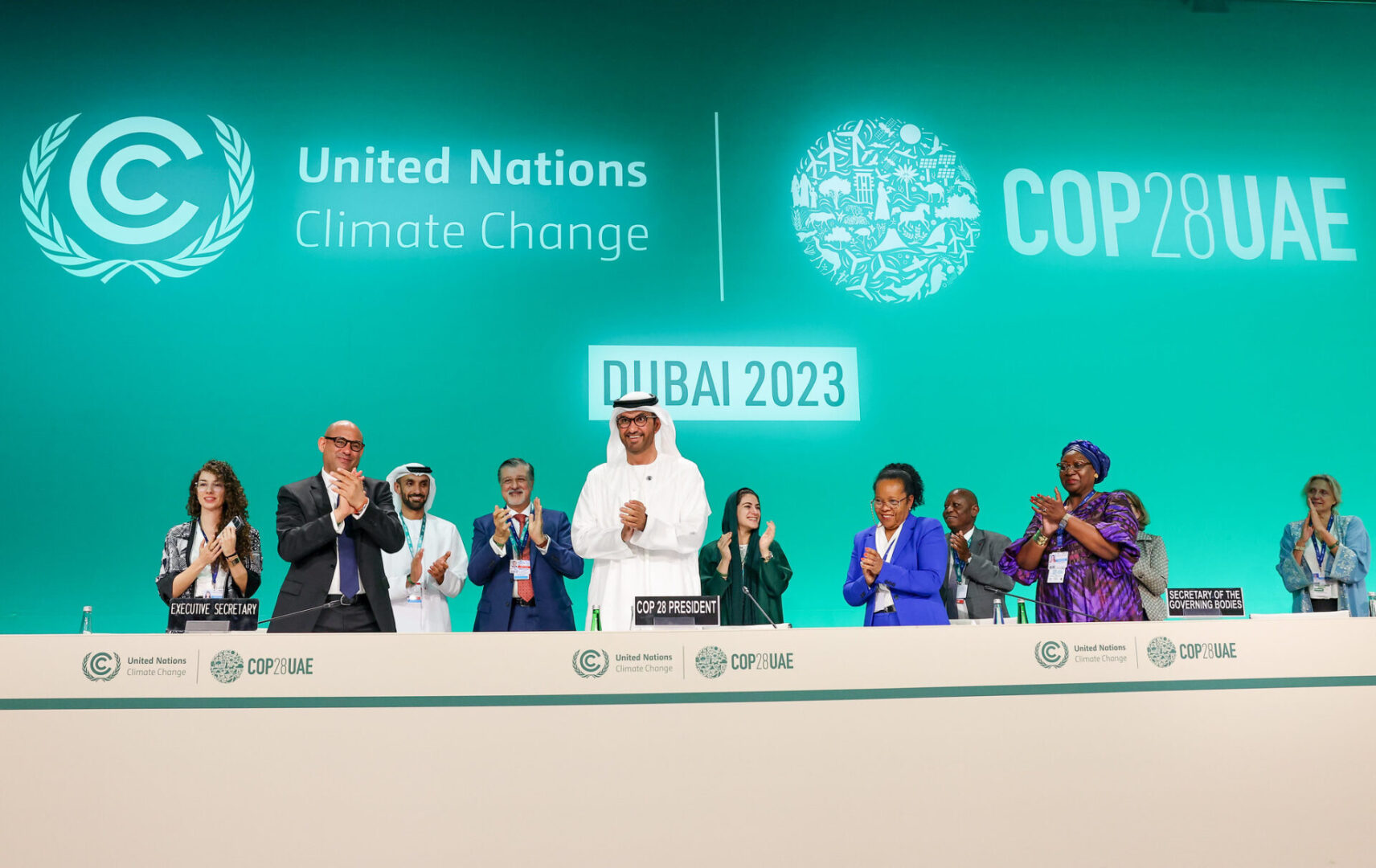COP28: What were the outcomes?
Written by Olivia Nater | Published: December 19, 2023
Following two weeks of negotiations, the COP28 climate conference attended by delegates from almost 200 nations wrapped up in Dubai on Wednesday, December 13. Let’s take a quick look at what was agreed upon.
For those with short attention spans, here’s a tl;dr:
Is the COP28 agreement sufficient to meet the Paris Agreement target of limiting climate warming to 1.5°C or “well below” 2°C? No.
Was the role of population solutions addressed? No, at least not in any high-level public discussions or agreements.
Was COP28 even useful? Yes — it moved the needle in the right direction, even if only a small amount.
Controversial beginnings
COP28, the 28th Conference of the Parties to the UN Framework Convention on Climate Change (UNFCCC), drew criticism before it even began, due to being hosted by one of the top oil-producing states, the United Arab Emirates, and presided over by Sultan Al Jaber, chief executive of the UAE’s national oil and gas company, the Abu Dhabi National Oil Company (ADNOC).
An investigation by the BBC alleged that the UAE was secretly planning to use the conference as an opportunity to strike oil and gas deals. Al Jaber also drew widespread criticism when he implied in a meeting that phasing out fossil fuels was not required to achieve the 1.5°C target, and that a phase-out would be incompatible with socioeconomic development “unless you want to take the world back into caves.” Al Jaber subsequently claimed his comments were misinterpreted.
Vague language around fossil fuels
The “Outcome of the first global stocktake,” arguably the most important agreement coming out of COP28, was seen as both encouraging and disappointing.
Fortunately, climate scientists’ countless warnings don’t seem to all have fallen on deaf ears. The global stocktake recognizes “that limiting global warming to 1.5 °C with no or limited overshoot requires deep, rapid and sustained reductions in global greenhouse gas emissions of 43 percent by 2030 and 60 percent by 2035 relative to the 2019 level and reaching net zero carbon dioxide emissions by 2050.”
The document calls for “Transitioning away from fossil fuels in energy systems, in a just, orderly and equitable manner, accelerating action in this critical decade, so as to achieve net zero by 2050 in keeping with the science.” This makes it an improvement to previous COP agreements, which (believe it or not), have never acknowledged the need to ditch fossil fuels. At COP26 in Glasgow, Scotland, after much negotiation, parties only agreed to “phase down unabated coal power.”
Nevertheless, it is unclear what exactly is meant by “transitioning away from fossil fuels,” and there is no timeline. More than 100 countries, including the 27 European Union members and all island states (whose continued existence depends on strong climate action), were pushing for a complete “phase-out” of fossil fuels, which did not make it into the final document due to strong opposition from the Organization of the Petroleum Exporting Countries, or OPEC, led by Saudi Arabia.
The text does not call for phasing out coal, the dirtiest fossil fuel, either — it only calls for “accelerating” the “phase-down of unabated coal power” that was agreed on at COP26.
 The global stocktake agreement calls on parties to triple “renewable energy capacity globally” and to “double the global average annual rate of energy efficiency improvements” by 2030. To be effective at cutting emissions, however, renewable energy must replace fossil fuels, not just be used alongside them. There is also much allusion to questionable technologies and accounting measures, such as carbon capture and carbon credits. Additionally, the document states that “transitional fuels can play a role in facilitating the energy transition,” whereby “transitional fuels” is widely interpreted as referring to natural gas, a fossil fuel, the fastest growing source of carbon dioxide emissions, and a large source of methane.
The global stocktake agreement calls on parties to triple “renewable energy capacity globally” and to “double the global average annual rate of energy efficiency improvements” by 2030. To be effective at cutting emissions, however, renewable energy must replace fossil fuels, not just be used alongside them. There is also much allusion to questionable technologies and accounting measures, such as carbon capture and carbon credits. Additionally, the document states that “transitional fuels can play a role in facilitating the energy transition,” whereby “transitional fuels” is widely interpreted as referring to natural gas, a fossil fuel, the fastest growing source of carbon dioxide emissions, and a large source of methane.
Roles of agriculture and population ignored
Another big shortcoming was the conference’s failure to meaningfully address the role of agriculture in climate change. Our food systems are responsible for a quarter to a third of all global greenhouse gas emissions, which, at the higher end of this estimate, makes them the primary driver of climate change, contributing more greenhouse gases than even energy use in industry (the source of a quarter of emissions).
Livestock farming is responsible for the majority of agricultural emissions and accounts for 12 percent of global emissions, according to the UN Food and Agricultural Organization (FAO). In addition, the FAO projects that by 2050, demand for terrestrial animal products will increase by 20 percent due to population growth and rising incomes. Cattle are the primary contributors to greenhouse gas emissions, responsible for 62 percent of all livestock emissions. Activists were thus dismayed at the record number of meat and dairy representatives at COP28, who lobbied strongly against any recommendations to reduce the production and consumption of animal products. Cattle ranching and soy production (largely for livestock feed) are also the primary drivers of tropical forest loss, which makes them a major barrier to leveraging the carbon storage capacity of forests, a critical climate action.
As the number of people on this planet affects the emissions from pretty much every sector, it is also disappointing that empowering population solutions were not considered at COP28. Climate solutions research initiative Project Drawdown ranks slowing population growth by removing barriers to education and family planning as the third most impactful action to limit global warming to 2°C, after reducing food waste and switching to plant-based diets. Empowering women also plays a key role in improving climate resilience.
Assistance for developing countries — some progress, a lot of frustration
After negotiations throughout the year, a “Loss and Damage Fund,” originally agreed on at COP27 in Sharm el-Sheik, Egypt, was officially “operationalized” on the first day of the Dubai summit. The fund is intended to help developing countries that are facing the worst climate impacts to pay for the damages these cause. Initial pledges from Global North countries amount to roughly $700 million, including $108 million from both Italy and France, $100 million from both the UAE and Germany, and just $17.5 million from the U.S., which is responsible for the biggest share of historical emissions.
 While this is a welcome development, the pledged funds represent only around 0.1 percent of the up to $580 billion in climate-related damages vulnerable countries may face by 2030.
While this is a welcome development, the pledged funds represent only around 0.1 percent of the up to $580 billion in climate-related damages vulnerable countries may face by 2030.
At previous COPs, high-income countries also committed to providing “climate finance” to help developing countries cut emissions and adapt to climate change. In 2009 “developed” countries agreed to raise at least $100 billion of climate finance for developing countries every year, from 2020 until 2025. Countries have so far failed to meet this target, but a recent report from the Organization for Economic Co-operation and Development (OECD) claims it was “likely” met “as of 2022.” The non-profit Oxfam contradicts this claim, however, suggesting in a 2023 report that wealthy countries have overstated the support they have provided, and that most of this has been in the form of loans, which risks increasing developing countries’ debt burden.
And so, what now?
While the COP28 agreement will not enable the world to meet the Paris Agreement, climate scientist Johan Rockström has called it a “pivotal landmark” which marks the “beginning of the end of the fossil fuel-driven world economy.” Let’s hope he’s right.
Delegates will reconvene at COP29, which will be held in Baku, Azerbaijan, in November 2024. And in early 2025, countries are required to deliver new climate plans, called “Nationally Determined Contributions” or NDCs. These milestones must lead to much stronger climate action to ensure a livable future on our planet.

